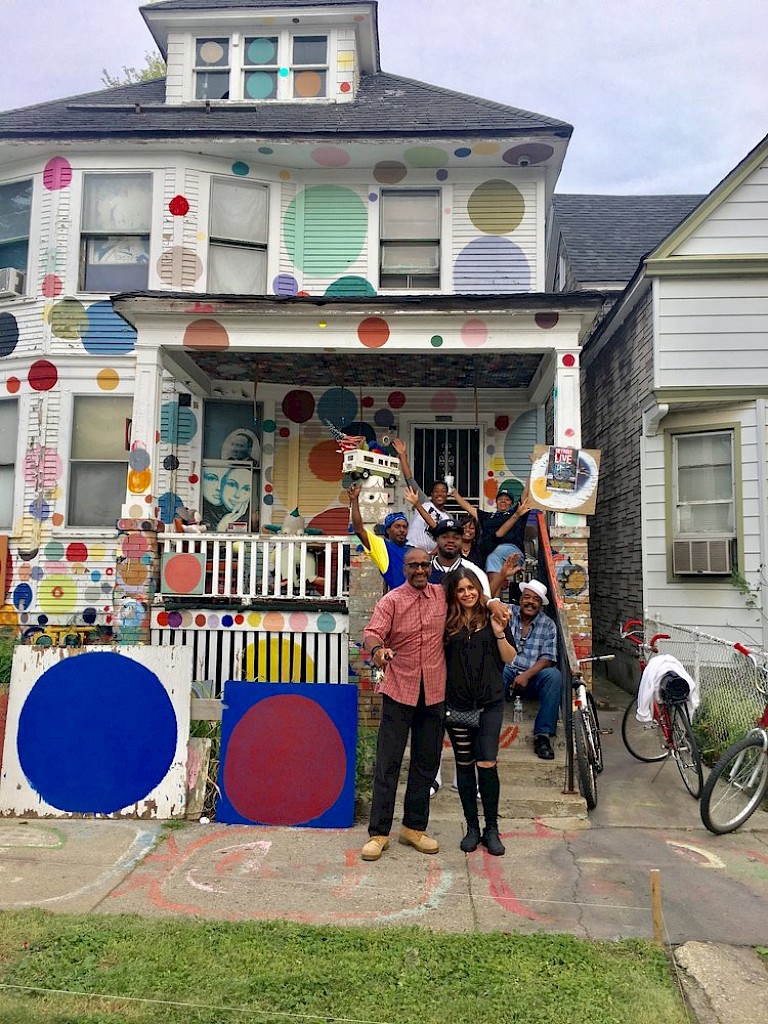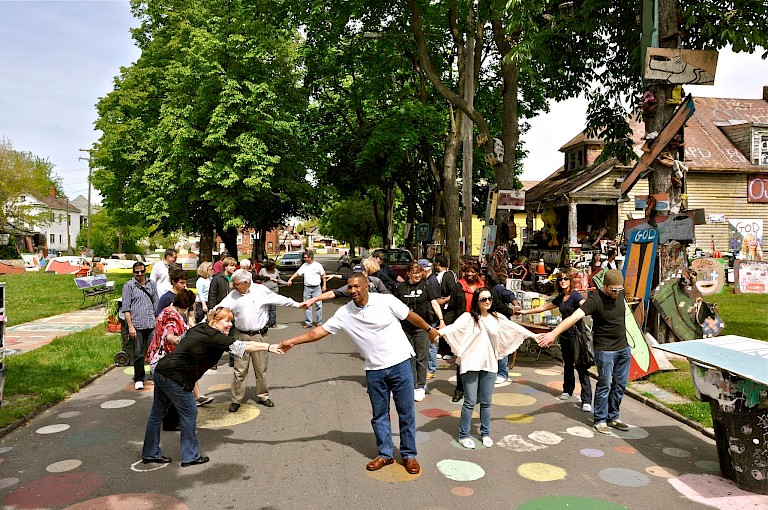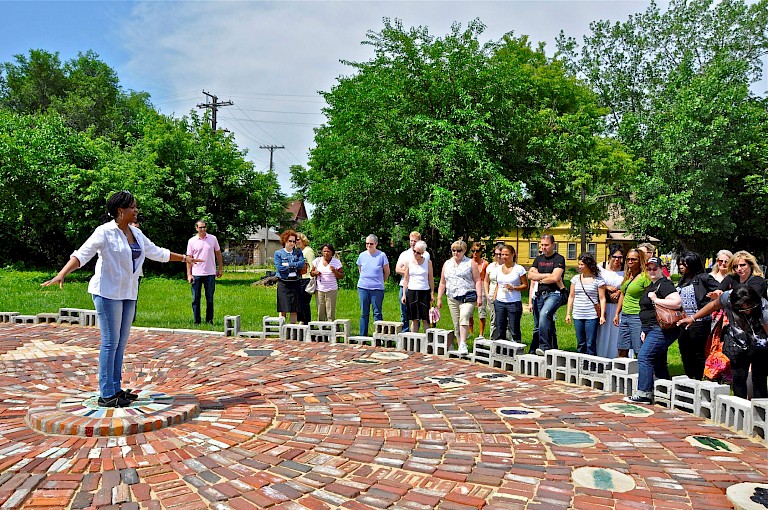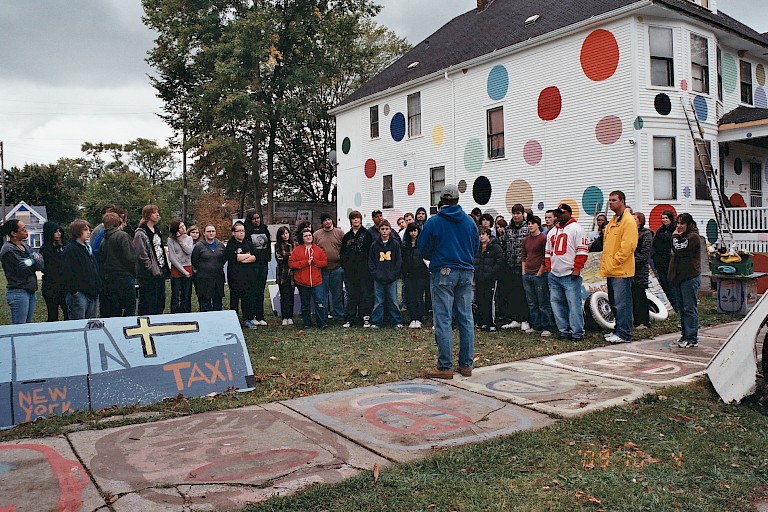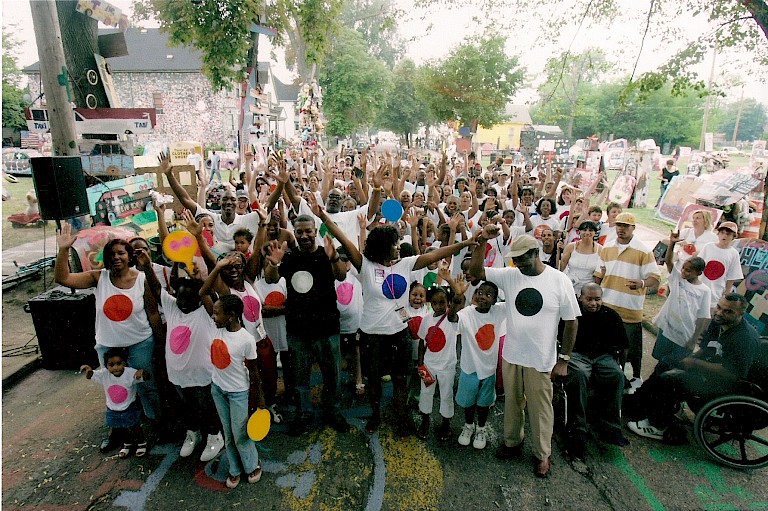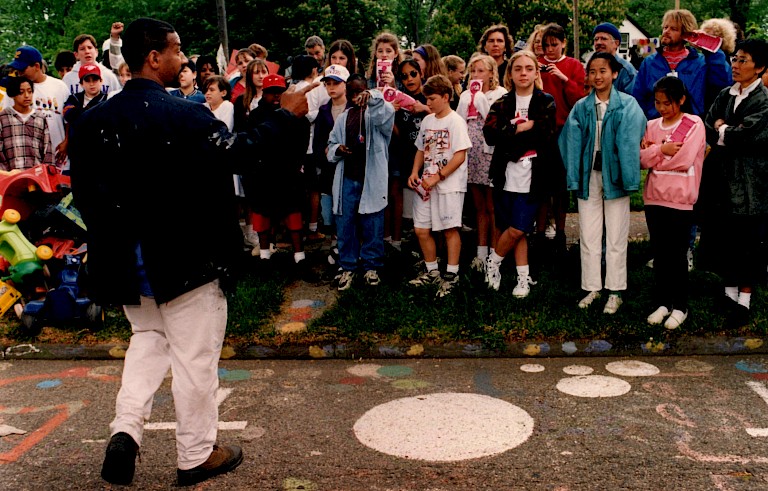Heidelberg 3.0
Artist: Tyree Guyton
Location: North America
Year of Completion: 1989
Researcher: Jen Krava
Thirty-two years ago, artist Tyree Guyton started The Heidelberg Project – the transformation of the McDougall-Hunt neighborhood on Detroit’s east side from vacant lots and houses to an arts environment using materials found through the neighborhood’s clean up. Guyton and his team have been self-directing this work without any official support. Now, the charge of the Heidelberg Project’s team is to strategize the sustainability of this project for the next thirty years, through the larger engagement of the neighborhood to protect, secure, and advance the legacy of The Heidelberg Project for generations to come. What would a new vision look like, particularly with what is happening in Detroit right now?
Some of the change in Detroit has justifiably caused friction largely because of questions around who is benefitting and who will be at the table for the revitalization of the city. Heidelberg has always been a project that doesn't adhere to the traditional politically, geographic and demographic bounds of such re-development.
And so was born Heidelberg 3.0: a strategy to create a self-sustaining arts and culture village, while valuing and respecting the people who have been part of this community for a long time, and bring them into the fold about how things are working. The team began a planning process around what want to do physically and civically, and have come up with several strategies:
- Construction and renovation of houses.
- Heidelberg wants to rebuild the infrastructure in the neighborhood - rebuilding the houses, building new houses, and using the interiors as functional structures that do different things. For example, the “House of Soul” has an exterior covered in records, but inside is educational programming.
- Renovation and transformation of numbers house - first representation of 3.0. concrete step - opening of community, physically transforming building inside and out, hub for the neighborhood - manifestation of this vision.
- Polka Dot house restoration will commence soon after numbers house - work is under way. turn into heidelberg project museum, use it as a legacy for tyree's work, and document the first 30 years. just launched heidelberg project app, inspiration, story behind pieces of art
- Site decommissioning - making way for what comes next. Always will be a footprint but not across all the lots the way it is now. Some stuff end up in museums.
- Heidelberg Arts Leadership Academy, their first education program in schools in Detroit, and the only art program available in some of the schools.
- Arts education and leadership. They plan to convene the community to develop vision, art, equity, and diversity for the project. This is one of the more important initiatives for a self-sustaining community. Neighbors play a piece in strengthening this area as an attraction, and providing markets and activities to keep people in the neighborhood, such as cafes, art programming, arts and crafts markets.
The Heidelberg 3.0 project proves the importance of community involvement in neighborhood revitalization, and that a project can exist for a long time without any official support from the city in which it is located. Heidelberg also shows us the importance of flexibility within neighborhood revitalization projects to remain relevant and sustainable for years to come.
Image Credits: Geronimo Patten
All copyright belongs to Shanghai Academy of Fine Arts, Shanghai University.




